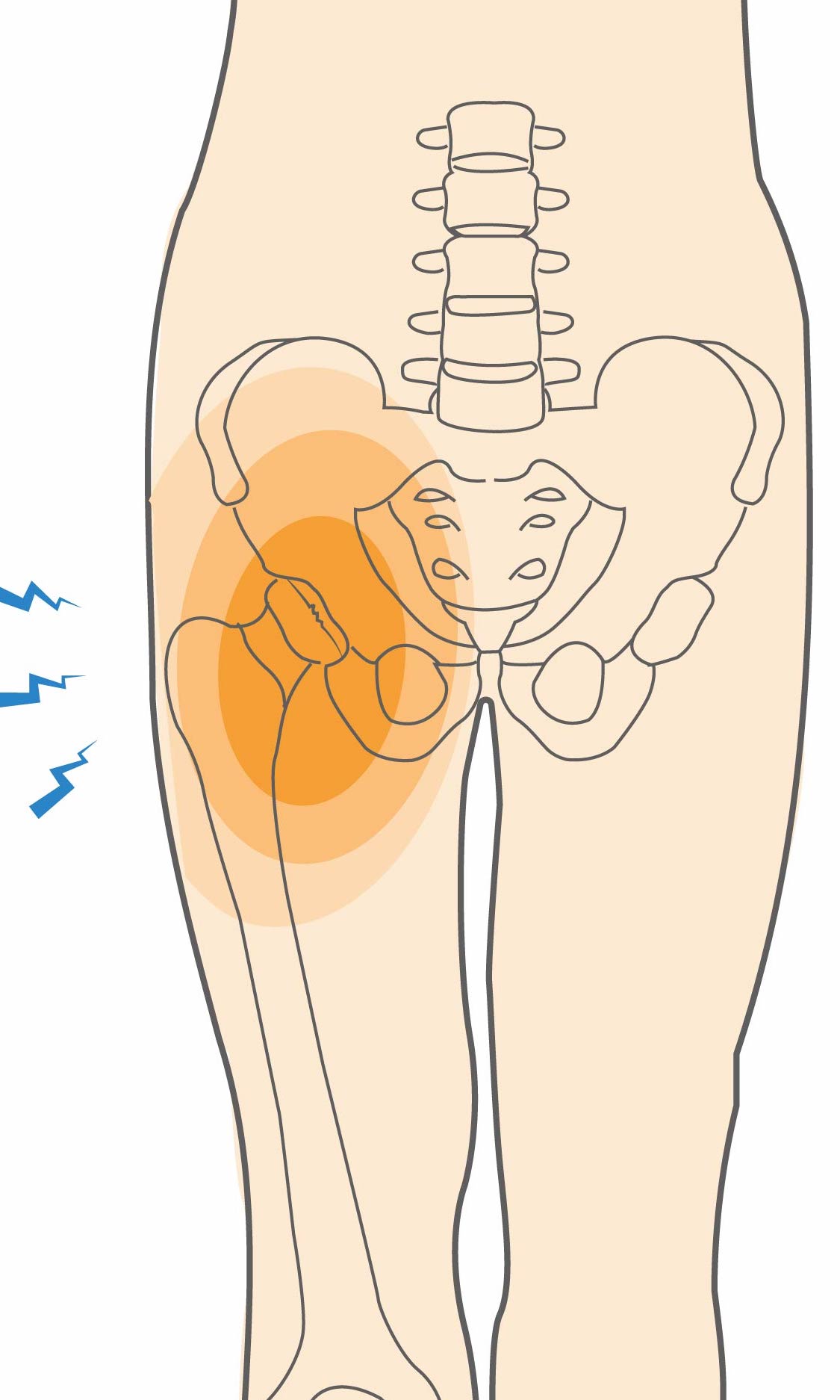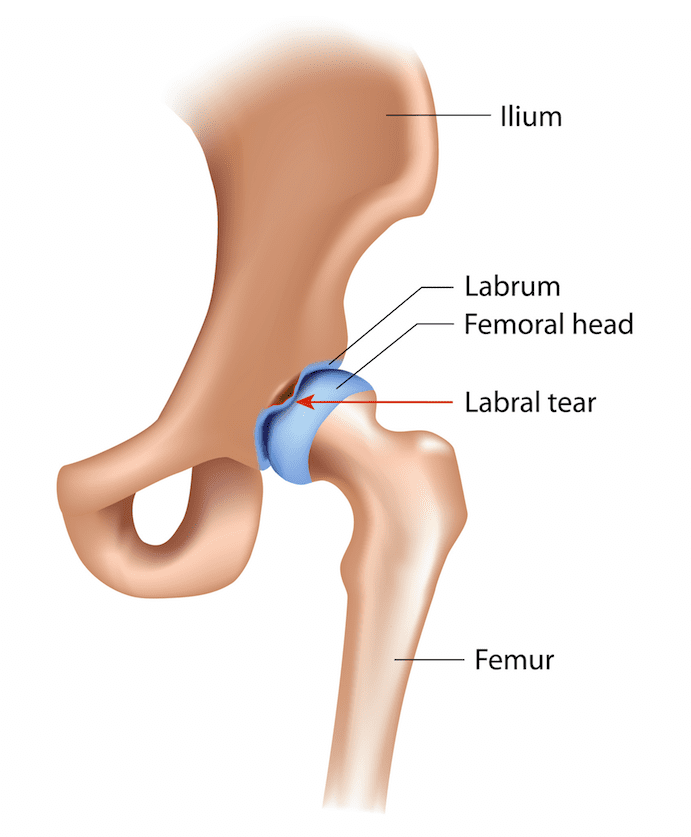The hip is often referred to as a “ball and socket” joint. The ball at the top of the thigh bone (called the femur) fits into the socket (the acetabulum) in the pelvic bone. The hip labrum is a special ring of cartilage, or rubber-like tissue, that attaches to and covers the outer rim of the acetabulum (the socket). It helps to secure the ball in the socket and also gives your hip joint additional cushioning and stability. But the labrum can become damaged or torn, causing hip pain. Athletes are particularly at risk for these problems due to the repetitive forces they place on their hips.
Hip Labral Tears Causes, Symptoms & Treatment Options
The hip is often referred to as a “ball and socket” joint. The ball at the top of the thigh bone (called the femur) fits into the socket (the acetabulum) of the pelvic bone. The hip labrum is a special ring of cartilage, or rubber-like tissue, that attaches to and covers the outer rim of the socket (the acetabulum). It helps to secure the ball in the socket and also gives your hip joint additional cushioning and stability. But the labrum can become damaged or torn, causing hip pain. Athletes are particularly at risk for these problems due to the repetitive forces they place on their hips.
Overview
Overview

What causes Hip Labral Tears?
Hip labral tears can be caused by direct trauma such as a fall onto the side of the hip, a collision on the playing field, or some other type of rotational trauma to the hip. They can also result from a developmental and structural abnormality of the shape of the bones that make up the hip joint, combined with chronic wear and tear of the joint caused by long-term use or overuse. Certain sports seem to have a higher incidence of labral injuries due to the nature of the hip movements required by the sport. For example, violent and sudden swinging, pivoting, and rotating of the hip especially while the hip is flexed places increased stresses on the labrum.
Hip labral tears are common in these sports:
- Soccer
- Hockey
- Football
- Golf
- Ballet
- Martial Arts

Symptoms
Not all labral tears of the hip cause pain. Some hip labral tears do not result in any symptoms at all.
However, these are symptoms that may suggest you have a problem with your hip labrum:
- Pain around the front (groin) or side of your hip especially while bending and rotating the hip.
- Pain that worsens with impact activities such as walking or running.
- Pain associated with a locking, clicking, or catching sensation in your hip joint.
- Stiffness in your hip joint.
- Limited range of motion.
When to see a doctor
If your symptoms don’t improve or get worse over time, you should see your doctor. Your doctor will ask questions about your symptoms (called a medical history) while also inquiring about your sports activity. Your doctor will then examine your hip. One physical test for a labral tear is called the “impingement test.” This test involves bending your hip to a right angle while bringing it slightly across your midline, and then turning the hip inward. This tends to trap the labrum and reproduces the pain of a labral tear.
Special x-rays will assist your doctor in making the diagnosis of a labral tear by ruling out other causes of hip pain (such as arthritis, bone spurs, or unsuspected fractures). The x-rays may also show evidence of structural abnormalities of your hip that can predispose you to labral damage. Meanwhile, magnetic resonance imaging (MRIs) tests are very useful for showing the actual tear and other soft tissues within the joint.
Non-operative treatment
Initially, your doctor may recommend a non-surgical approach to address a hip labral tear, especially if your symptoms are not severe. Often athletes are able to recover through non-operative treatment and return to their favorite sport within a matter of weeks. Treatment advice may include:
- Rest
- Ice
- Substituting high impact sports that can aggravate and stress the hip (e.g. jogging) with low impact sports (e.g. swimming) while recovering
- Temporary use of nonsteroidal anti-inflammatory (NSAID) medication like ibuprofen to reduce pain
- Physical therapy stretches and exercises to strengthen muscles around your hip joint
- Corticosteroid medication administered via injection (into the hip joint) or orally to reduce tenderness and pain
Try these exercises to help address your condition:
Below is a PDF of the Exercise Program
Surgical Treatment
If you have a tear and if non-surgical treatments are not effective in providing relief from pain, surgery may be considered to repair damage to the labrum. Typically, surgery is done as a minimally invasive, arthroscopic procedure, using a small camera (called an arthroscope) that lets your doctor view inside your hip. Through two or three small incisions, your doctor can access and repair the labrum using small instruments. In some cases, the labrum is irreparable, and the torn piece might need removal. In more complicated cases associated with structural abnormalities, some of the impinging and offending bone will be removed. This type of surgery is also usually done arthroscopically on an outpatient basis, allowing you to go home the day of the procedure.
Recovery
Recovery time for athletes who undergo surgery for hip labral tears varies depending on the type of surgery, extent of hip damage, and other factors. If the labrum is repaired, recovery can take several months and include use of crutches and physical therapy. Many athletes are able to return to their full level of sports activity, depending in part on the physical intensity of their sport. A return to play usually happens gradually, with a focus on resuming day-to-day activities first, then less stressful activities (e.g. swimming or cycling) before a full return to preoperative activities. Your doctor and physical therapist will guide you through this process.
GET BACK TO WHAT YOU LOVE. FASTER
Sources
https://orthoinfo.aaos.org/en/treatment/hip-arthroscopy/
https://www.mayoclinic.org/diseases-conditions/hip-labral-tear/symptoms-causes/syc-20354873
https://www.mayoclinic.org/diseases-conditions/hip-labral-tear/diagnosis-treatment/drc-20354878
https://www.ortho.wustl.edu/content/Patient-Care/3495/Services/Hip-Knee/Adolescent-and-Young-Adult-Hip-Disorders-Center/Hip-Labral-Tear-FAQs.aspx

